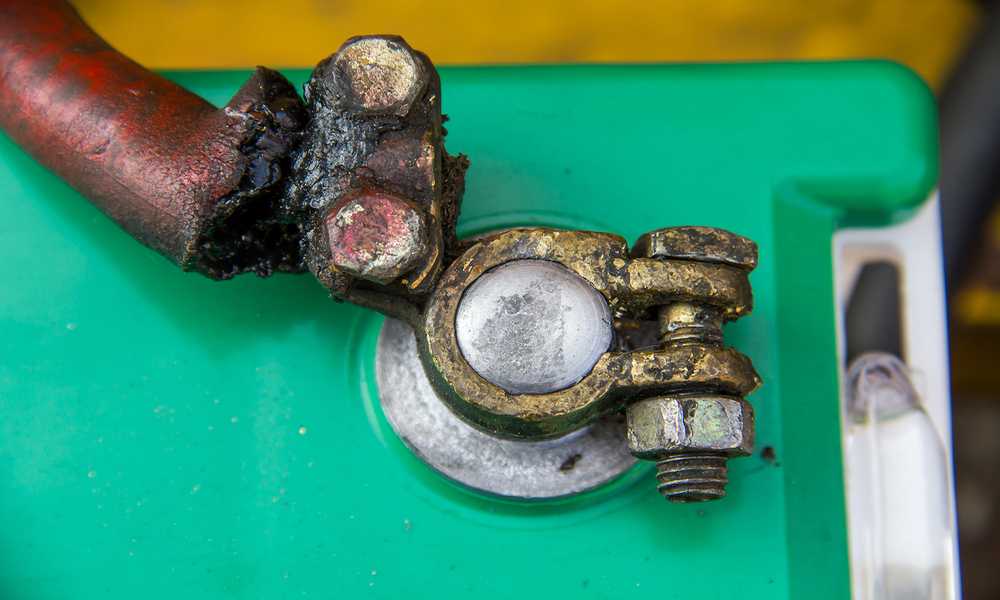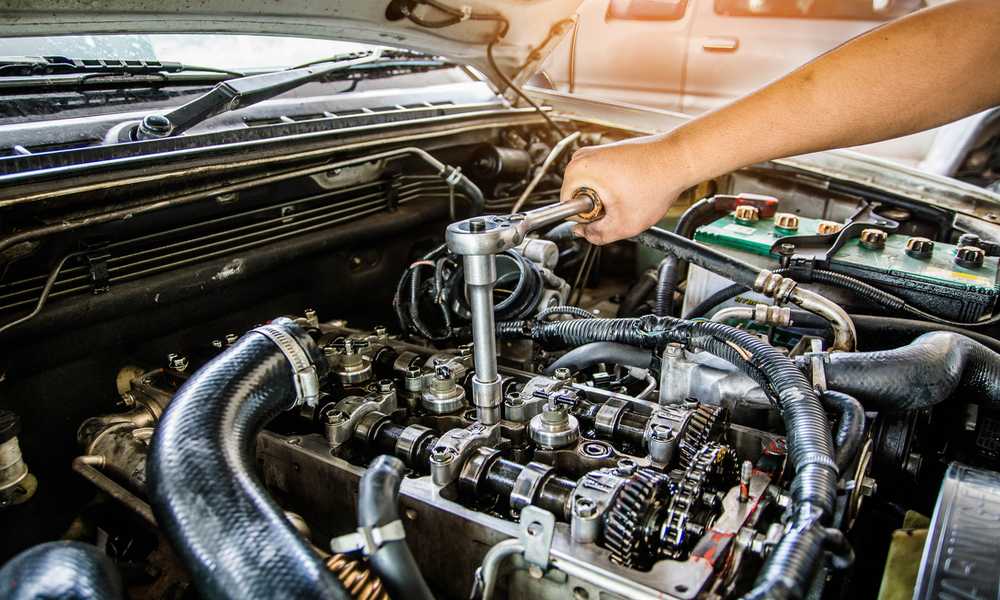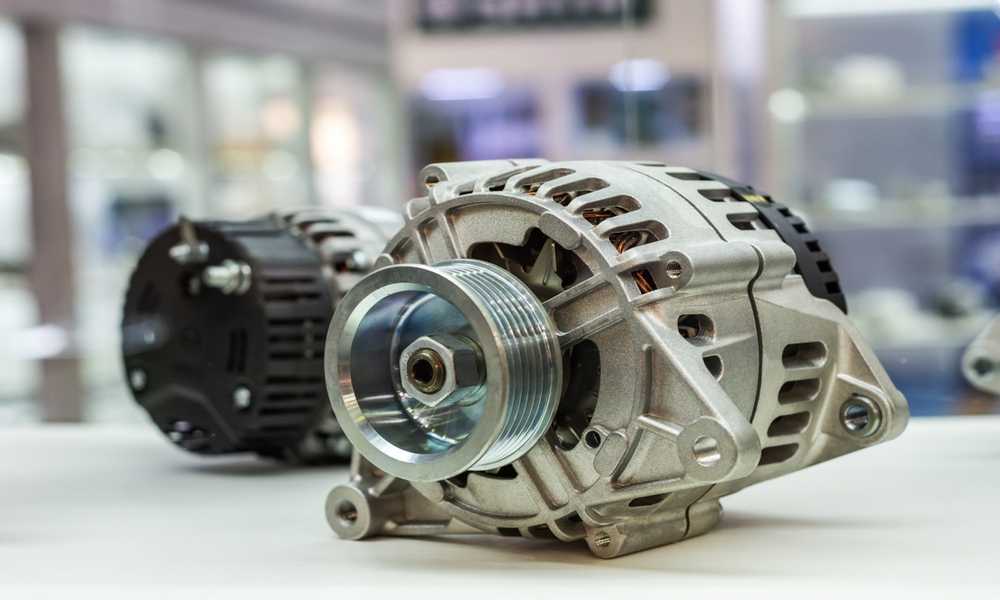Is your car still giving you trouble even after replacing the alternator and battery? It can be frustrating to invest time and money into fixing your vehicle, only to have it break down again. But don’t worry, you’re not alone! Many car owners experience this issue, and there are several potential causes that could be responsible for your car’s continued demise. In this blog post, we’ll explore the possible reasons why your replaced alternator and battery car still dies, as well as provide some helpful tips on how to fix it. So buckle up and let’s dive in!
Causes of Replaced alternator and battery car still dies
1. Short in the wiring

One of the potential causes for a car still dying after replacing the alternator and battery is a short in the wiring. Electrical systems in vehicles are complex networks of wires that transmit power throughout various components. A short circuit can occur when there is a faulty connection or damaged wire, causing an abnormal flow of electricity. When there is a short in the wiring, it can disrupt the electrical supply to vital parts of your vehicle, including the alternator and battery. This disruption can lead to insufficient charging of the battery or even drain it entirely, resulting in your car dying unexpectedly.
To identify if a short circuit is causing your car’s issues, it is essential to inspect all visible wiring for any signs of damage such as frayed insulation or exposed wires. Additionally, using multimeters and other diagnostic tools can help pinpoint any abnormalities within the electrical system. If you suspect that a short circuit may be responsible for your car’s troubles despite replacing both the alternator and battery, seeking professional assistance from an automotive electrician would be advisable. They have expertise in diagnosing and repairing electrical problems like shorts in vehicle wiring systems.
2. Bad ground connection
One possible cause for a car still dying after replacing the alternator and battery is a bad ground connection. The ground connection in a vehicle’s electrical system is responsible for providing a path to complete the circuit, allowing electricity to flow properly. When there is a bad ground connection, it can disrupt the flow of electricity and prevent the alternator from charging the battery effectively.
A bad ground connection can occur due to corrosion or loose connections at various points throughout the car’s electrical system. Over time, these issues can affect the overall performance of both the alternator and battery, causing them to not work optimally even when replaced. To fix this issue, it is important to inspect all ground connections in your vehicle. Start by checking the main ground wire that connects directly to your car’s chassis or engine block. Ensure that it is securely attached and free from any corrosion or debris.
Additionally, check other smaller grounding wires throughout your vehicle, such as those connected to components like lights or sensors. Clean off any corrosion with a wire brush and tighten any loose connections. By addressing any bad ground connections, you may be able to resolve issues with your replaced alternator and battery dying prematurely. It’s always best practice to consult with a professional mechanic if you’re unsure about handling electrical components in your vehicle yourself.
3. Loose battery terminal
The connections between the battery and its terminals need to be tight in order for electricity to flow properly. When the battery terminal is loose, it can lead to intermittent electrical contact, causing power disruptions that can result in your car stalling or not starting at all. This issue may occur because of vibrations from driving or simply due to wear and tear over time.
To fix this problem, you’ll need to ensure that both the positive and negative terminals are securely attached to their respective posts on the battery. Start by disconnecting them using a wrench or pliers. Clean any corrosion or debris from both the terminals and posts using a wire brush or sandpaper.
Once cleaned, reattach the terminals tightly onto their posts and make sure they cannot move around easily. You can use a wrench or pliers again to tighten them down securely. Regularly checking your battery’s condition and ensuring tight connections will help prevent future issues with your car dying unexpectedly even after replacing the alternator and battery.
4. A problem in the engine

A problem in the engine can be one of the reasons why a car still dies even after replacing the alternator and battery. The engine is a complex system that requires various components to work together seamlessly. If there is an issue within the engine, it can affect how power is generated and distributed.
One possible problem in the engine could be a faulty fuel pump. The fuel pump is responsible for delivering gasoline from the tank to the injectors, which then provide fuel to each cylinder for combustion. If the fuel pump is not functioning properly, it may not be supplying enough fuel to keep the engine running smoothly, causing it to stall or die unexpectedly. Another potential issue could be related to ignition problems. Faulty spark plugs or ignition coils can prevent proper combustion in each cylinder, leading to misfires and ultimately causing your car’s engine to shut off unexpectedly.
Additionally, issues with sensors such as oxygen sensors or crankshaft position sensors can disrupt crucial information being sent between different components of your car’s engine management system. This lack of communication can result in poor performance and eventual stalling. It’s important to note that diagnosing and fixing problems within the engine requires expertise and specialized tools. If you suspect an issue with your engine, it’s recommended that you consult with a professional mechanic who can accurately diagnose and resolve any underlying problems.
5. Blown alternator fuse
One possible reason why a car still dies after replacing the alternator and battery is a blown alternator fuse. The alternator fuse plays a crucial role in protecting the electrical system of your vehicle. It acts as a safety mechanism to prevent excessive current flow that could damage sensitive components.
When this fuse blows, it interrupts the power supply from the alternator to the battery, causing your car’s electrical system to malfunction. This can result in various issues such as dimming lights, loss of power steering, and ultimately, your car dying. Replacing a blown alternator fuse is relatively simple. First, you need to locate the fuse box in your vehicle. Consult your owner’s manual for its specific location. Once found, carefully remove the blown fuse using needle-nose pliers or a fuse puller tool.
Next, replace it with an identical fuse rating recommended by your manufacturer. It’s important not to use a higher-rated fuse as this can cause further damage to your electrical system. After replacing the blown alternator fuse, start your car and check if everything is functioning properly again. If not, there may be another underlying issue contributing to your car dying even after changing both the alternator and battery.
Remember that diagnosing automotive electrical problems can be complex and challenging without proper knowledge or experience. In cases where you’re unable to identify or fix the problem yourself, it is best to consult with a professional mechanic who can accurately diagnose and resolve any issues with expert precision. While a blown alternator fuse can contribute to why a replaced alternator and battery might still cause your car to die; it’s essential not only fixing this particular issue but also considering other potential causes mentioned earlier in order for an effective troubleshooting process.
6. A problem in the alternator voltage regulator
When it comes to the electrical system of your car, the alternator plays a crucial role. It not only charges the battery but also regulates the voltage that powers various components of your vehicle. However, even after replacing both the alternator and battery, you may still face issues with your car dying unexpectedly. One possible culprit in such situations could be a problem with the alternator’s voltage regulator. The voltage regulator is responsible for maintaining a steady flow of electricity from the alternator to the battery and other electrical systems in your car. If this component malfunctions or fails altogether, it can lead to erratic charging patterns and eventually cause your car to die.
A faulty voltage regulator may result in overcharging or undercharging of the battery. Over time, this inconsistent charging can damage both the new battery and recently replaced alternator. The excess or insufficient charge can drain power from essential components like ignition coils, fuel injectors, and sensors – all vital for proper engine performance. To fix this issue, you’ll need to replace or repair the faulty voltage regulator within your alternator. This requires professional expertise as it involves intricate electrical work. Moreover, simply replacing one part might not solve everything; there could be underlying reasons why the original regulator failed.
If you’re experiencing these problems despite recently replacing both your alternator and battery, consulting an experienced mechanic will help diagnose any issues with your vehicle’s electrical system accurately. They will perform comprehensive tests on all related components to determine if there are any additional faults causing these recurring problems. Remember that troubleshooting complex automotive issues often takes time since multiple factors can contribute to seemingly straightforward symptoms like a dying car after replacing parts.
7. The new battery is bad
One possible cause for a car still dying after replacing the alternator and battery is that the new battery itself may be faulty. While it’s uncommon, there is always a chance of receiving a defective product, even with brand new items.
A bad battery can prevent the alternator from properly charging it, leading to repeated power failures in your vehicle. To determine if this is the issue, you can try jump-starting your car using another vehicle or a portable jump starter. If your car starts and runs normally after being jumped, it could indicate that the new battery is indeed the problem.
To fix this issue, you will need to replace the faulty battery with a new one. It’s important to ensure that you purchase a high-quality replacement from a reputable source. Double-checking compatibility and warranty information can also help avoid any future problems. Remember that even though it might be frustrating to encounter issues with newly replaced components, troubleshooting and identifying potential causes are essential steps towards resolving them effectively.
8. Damaged serpentine belt causing alternator not charging battery

One possible cause for a car’s battery dying even after replacing the alternator and battery is a damaged serpentine belt. The serpentine belt plays a crucial role in powering various components of the engine, including the alternator. If this belt becomes worn or damaged, it can prevent the alternator from charging the battery effectively.
A damaged serpentine belt may result in reduced power transmission to the alternator, causing it to spin at a lower speed than necessary. As a result, the alternator may not generate enough electrical power to recharge the battery adequately. To determine if a damaged serpentine belt is causing your car’s issues, inspect it closely for signs of wear or damage. Look for cracks, fraying, or glazing on its surface. Additionally, check its tension using an appropriate tool or consult your vehicle’s manual for guidance.
If you find that your serpentine belt is indeed damaged or worn out, replace it promptly with a new one recommended by your vehicle manufacturer. This should help restore proper power transmission to the alternator and ensure that your battery receives sufficient charge while driving. Remember to regularly inspect and maintain all belts within your vehicle’s engine system as part of routine maintenance checks.
How to fix car still die after replacing alternator and battery?
So, you’ve replaced the alternator and battery in your car, but it’s still dying on you. Frustrating, right? But fear not! There are a few things you can check to get to the bottom of this issue.
Ensure that all the connections between the alternator and battery are secure. Sometimes a loose or corroded connection can prevent them from functioning properly. Give them a thorough inspection and tighten or clean any suspect connections. Next, take a look at your vehicle’s belt system. A worn-out or damaged belt could be affecting the performance of your alternator. If it appears cracked or stretched, it may need replacing.
Additionally, consider checking the voltage regulator. This component regulates the amount of electrical charge going to your battery. If it isn’t working correctly, your new battery won’t receive enough power to keep running smoothly. It’s also worth examining other components related to charging and starting systems like fuses and relays. Faulty fuses or relays can disrupt proper power distribution within your vehicle.
Don’t discount the possibility of an entirely separate issue causing your car to die repeatedly after replacing these parts. It might be wise to consult with a professional mechanic who can diagnose any underlying problems that might be present in other areas of your vehicle. Remember, troubleshooting automotive issues can sometimes feel like solving a puzzle – but with patience and persistence (and maybe some expert help), you’ll be back on track soon enough!
Why does my car keep dying after replacing the alternator and battery?
One common issue that car owners may encounter is their vehicle dying even after replacing the alternator and battery. It can be frustrating, especially when you thought these replacements would solve the problem once and for all. So why does this keep happening?
It’s important to consider whether the new alternator was properly installed. Even the smallest mistake during installation can lead to issues with charging your battery, causing it to drain quickly. Double-checking the connections and ensuring they are tight and secure is crucial.
Another possibility is that there could be a parasitic draw on your battery. This means that something in your car is using up power even when it’s turned off, which drains the battery over time. It could be a faulty component or an electrical issue within your vehicle’s system. Additionally, if you frequently take short trips without giving enough time for the alternator to recharge the battery fully, it may not have enough power to start your car consistently.
In some cases, there might be an underlying problem unrelated to the alternator or battery replacement. Issues like a malfunctioning ignition switch or a faulty fuel pump can also cause intermittent stalling or complete engine failure. To troubleshoot this ongoing problem effectively, consulting with a professional mechanic who specializes in electrical systems is recommended. They will have expertise in diagnosing complex issues and finding solutions specific to your vehicle.
Remember, every car has its unique set of circumstances contributing to its problems – hence getting personalized advice from experts will help uncover any hidden culprits behind repeated breakdowns after replacing both the alternator and battery.
Why is my battery dead after replacing alternator?
This is a common question that many car owners find themselves asking. It can be frustrating to go through the trouble of replacing both the alternator and battery, only to have your car still experiencing issues. One possible reason for this problem is that there may be an underlying issue with your vehicle’s electrical system. Even though you’ve replaced the alternator, there could be a faulty connection or wiring problem that is draining power from your battery.
Another possibility is that the new alternator itself may be defective. Sometimes, even brand new parts can fail prematurely or not function properly. If this is the case, it’s important to take your car back to a professional mechanic and have them test the alternator to confirm if it’s working correctly.
Additionally, it’s worth considering how you are using your vehicle after replacing these components. Are you frequently taking short trips where the battery does not have enough time to recharge fully? Or are you leaving lights on or accessories plugged in when the engine isn’t running? In some cases, multiple replacements of either one part or both might just mean bad luck rather than any other underlying cause! It’s always wise to consult with a qualified automotive technician who can diagnose and fix any ongoing issues with your car’s electrical system!
Remember, troubleshooting automotive problems can sometimes require trial and error. Patience and persistence will help you get closer to resolving why your battery continues dying despite replacing both the alternator and battery!
What to do after replacing battery and alternator?
Now that you’ve taken the steps to replace both your battery and alternator, there are a few additional things you can do to ensure your car doesn’t continue to die unexpectedly. First, it’s important to check all of the connections. Make sure the cables are securely attached to both the battery terminals and the alternator. Loose connections can prevent proper charging and lead to continued issues. Next, consider getting a professional inspection. Even though you’ve replaced these crucial components, there could still be underlying issues causing your car’s problems. A mechanic will be able to diagnose any other potential causes for your car dying.
Additionally, keep an eye on your vehicle’s electrical system. If you notice any dimming lights or other signs of power loss, it may indicate a faulty component or wiring issue that needs further attention. Regularly maintain your new alternator and battery by cleaning them as recommended by their manufacturers. This will help maximize their lifespan and prevent future problems. By following these steps after replacing your battery and alternator, you’ll be well on your way to resolving any lingering issues with frequent stalling or dying of your car. Stay proactive in maintaining these vital components for optimal performance!
How does a new alternator affect a car?
A new alternator can have a significant impact on the performance of your vehicle. The alternator is responsible for charging the battery and providing power to electrical components while the engine is running. When an old or faulty alternator is replaced with a new one, it ensures that your car’s electrical system receives a consistent and reliable source of power. With a properly functioning alternator, you can expect improved overall performance of your car’s electrical systems. Your headlights will shine brighter, and you won’t experience dimming or flickering lights when using other electrical components such as air conditioning or audio systems.
Additionally, a new alternator can help prevent issues like frequent battery drain and stalling. It ensures that there is always enough power available to keep your battery charged so that it doesn’t become depleted while driving. Replacing an old or faulty alternator with a new one can greatly enhance the reliability and efficiency of your vehicle’s electrical system. It provides consistent power supply to various components, preventing potential problems such as battery drain or stalling. So if you’re experiencing any issues with your car’s electrical system after replacing the battery and alternator, it may be worth considering whether the newly installed alternator is functioning properly.
Why is my cars battery light on with new battery and alternator?

When you replace your car’s battery and alternator, the last thing you expect is to see the dreaded battery light come back on. It can be frustrating and confusing, especially since you went through the trouble of replacing these components in hopes of fixing any power issues. There are a few potential reasons why your car’s battery light may still be on after installing new parts. One possibility is that there could be an issue with the wiring or connections between the alternator and battery. Even a small loose connection can prevent proper charging and cause the light to illuminate. Another factor to consider is whether the replacement alternator was compatible with your specific vehicle make and model. Using an incorrect or incompatible alternator can lead to improper charging, resulting in a lit-up battery indicator.
Additionally, it’s worth checking if there are any other underlying electrical problems in your car that are causing excessive power drain or preventing proper charging. These issues could include malfunctioning sensors, faulty voltage regulators, or even a parasitic draw from another component. In some cases, resetting your car’s computer system by disconnecting the negative terminal of the battery for a few minutes may help clear any error codes related to charging system malfunctions.
If you’re unsure about diagnosing and resolving this issue yourself, it’s best to consult with a qualified mechanic who has experience working on electrical systems. They will have access to specialized tools and knowledge necessary for accurate troubleshooting. Remember that every car is unique, so while these suggestions provide some common reasons for having a lit-up battery light after replacing both alternator and battery, it’s essential to investigate further based on your specific vehicle’s make and model.
Final thoughts
Experiencing issues with your car dying even after replacing the alternator and battery can be frustrating. However, there are several potential reasons why this might be happening. It’s crucial to ensure that both the new alternator and battery were installed correctly. Double-check all connections and make sure they are secure. Additionally, consider testing the voltage output of the alternator to ensure it is functioning properly.
If everything appears to be in order with the installation and components, it may be necessary to look beyond just the alternator and battery. Other electrical issues or faulty components could potentially be draining power from your vehicle or causing it to die unexpectedly. Consider having a professional mechanic inspect your vehicle for any additional problems that may not have been addressed during the replacement process. They will have specialized knowledge and diagnostic tools to identify any underlying issues that could be causing your car to still die.
Remember that each vehicle is unique, so troubleshooting steps may vary depending on make, model, and year. It’s always best practice to consult with a professional if you’re unsure about anything or if you’ve exhausted all possible solutions on your own. Resolving this issue requires patience and determination as you work through potential causes one by one until a resolution is found. By taking these steps diligently, you’ll increase your chances of getting back on the road without any further incidents of your car dying unexpectedly after replacing both the alternator and battery.



